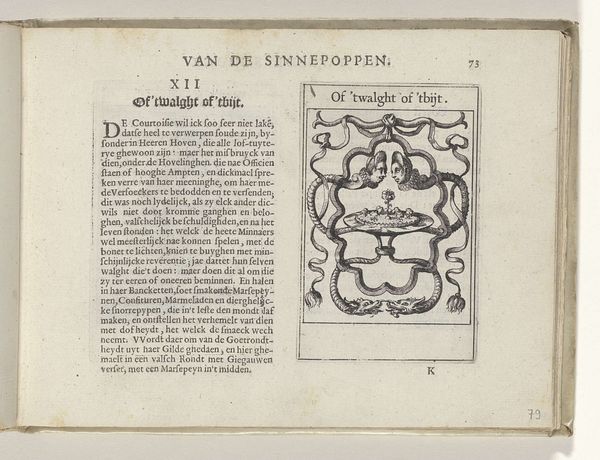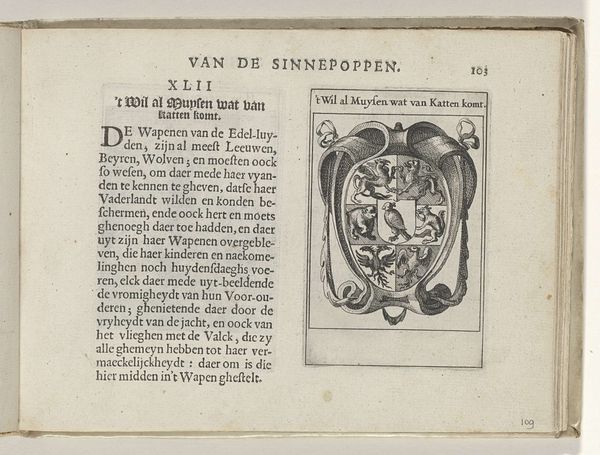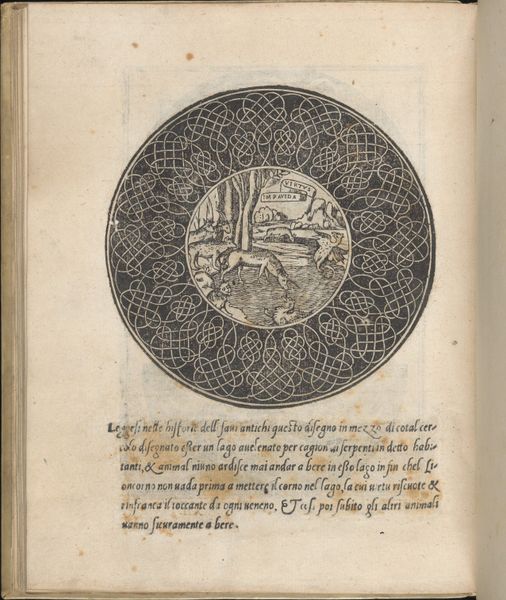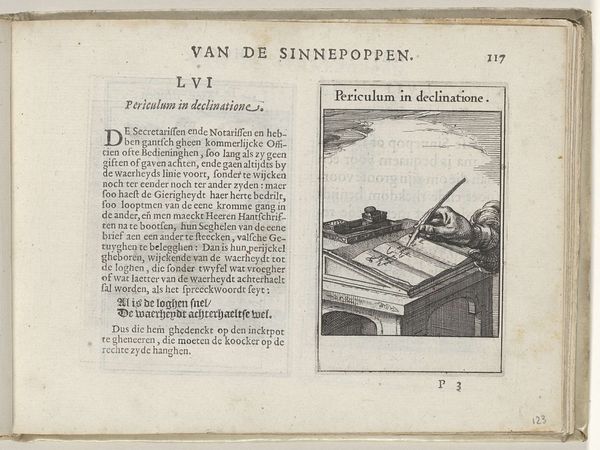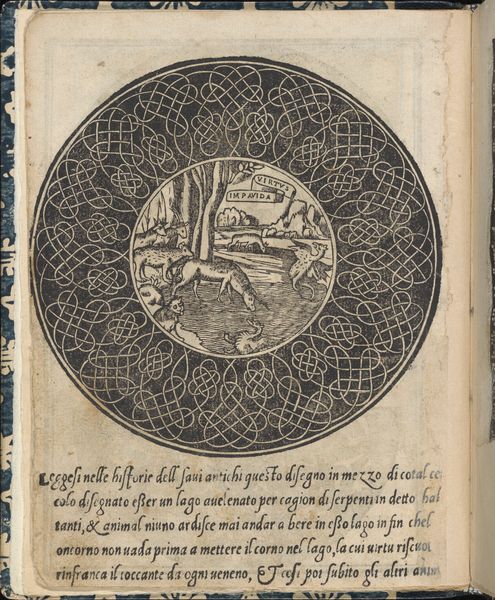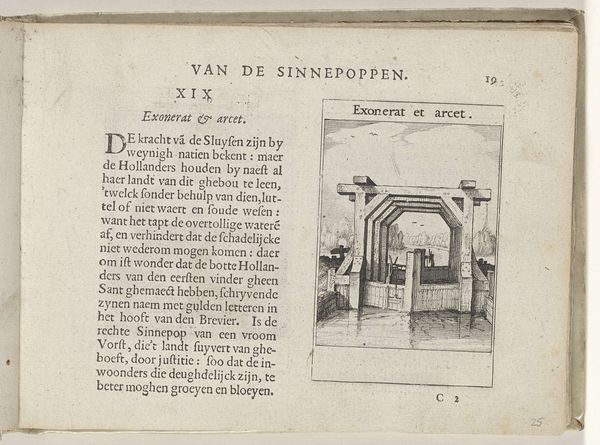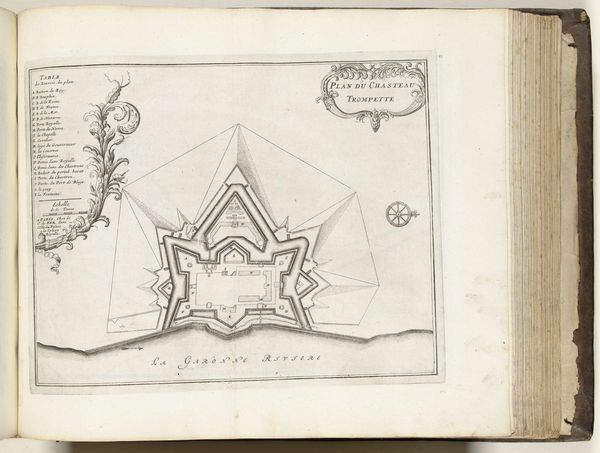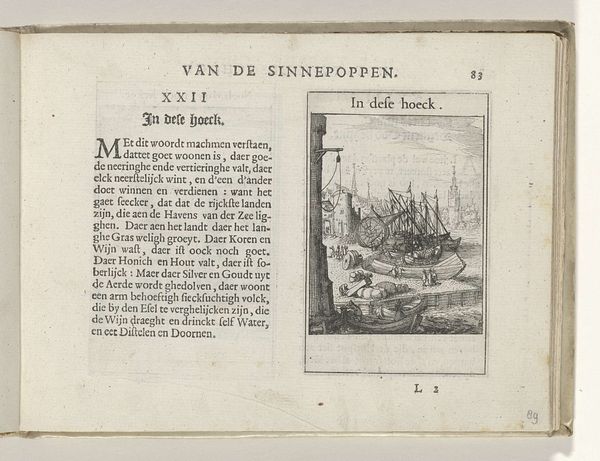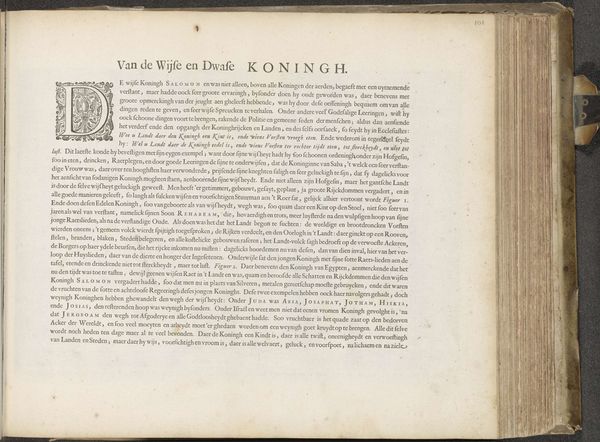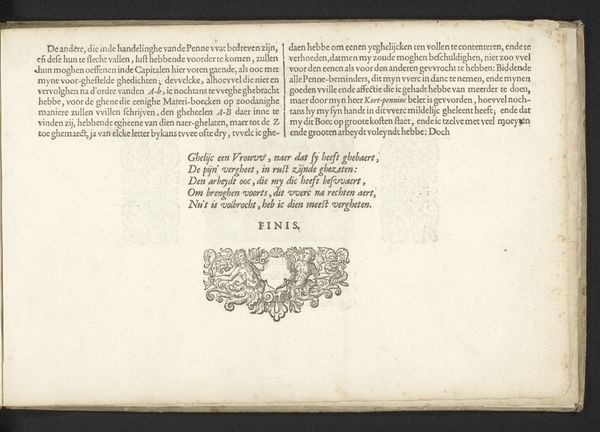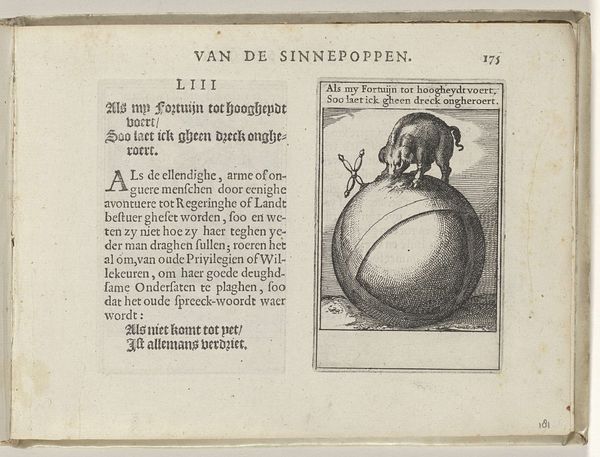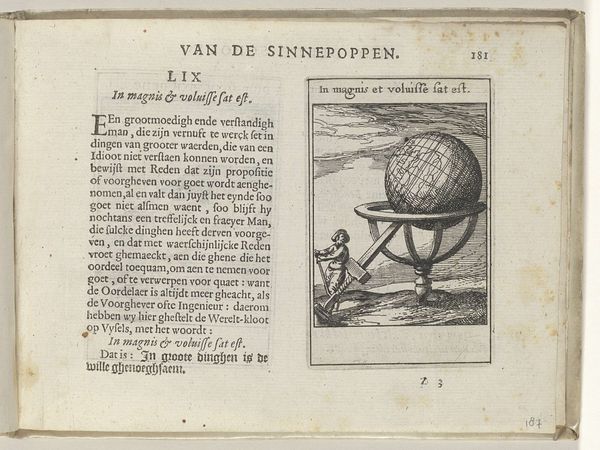
Dimensions: height 137 mm, width 188 mm, height 95 mm, width 60 mm
Copyright: Rijks Museum: Open Domain
Curator: Here, in this engraved print titled "LV Nescis quid valeat," created in 1614 by Roemer Visscher, we're looking at a really compact, yet conceptually rich piece. Editor: It's...dense, isn't it? My first impression is one of visual clutter, yet a distinct symbolic clarity emerges. The circular emblem is so eye-catching. Curator: Precisely. Visscher’s masterful engraving showcases a central emblem of what appears to be symbolic objects radiating from the middle. Notice the landscape element along the bottom margin too. Editor: And that text... it's quite overwhelming. The symbolic imagery sits between the writing on both sides of the opened book pages. Tell me more about what’s being expressed. What’s the socio-political situation at the time of its creation? Curator: Visscher, a figurehead of the Dutch Renaissance, embedded a strong moral lesson within this image. “Nescis quid valeat” roughly translates to "you do not know its worth". He criticizes blind avarice. The central wheel or rosette showcases different symbols pertaining to various human faults. Editor: Ah, it is fascinating how a small print could contain such a biting social critique. Considering the rise of capitalism and the opulent merchant class during that era, pieces like this must have challenged the accepted order of things. The phrase, you don’t know its worth, is an attack against economic materialism, especially within a society that was increasingly fixated on quantifiable values rather than, say, more spiritual virtues. Curator: Yes, precisely. The symbols circling that core remind us to consider these themes, each signifying different facets of flawed humanity and social behaviour. Editor: Makes me wonder—does art such as this incite reform? Does this encourage dialogue that can actually enact change in social mores? Or is the print itself a simple sigh in the vast chambers of greed and power, impotent to have effect? Curator: That's a profound question, isn’t it? The artwork, perhaps, is more of a cultural barometer, reflecting societal pressures, but with the ability to guide, at least for some. It’s about planting the seeds of consciousness. Editor: Consciousness as resistance, I like that! Ultimately this deep dive encourages me to remember art is, was, and always should be, an agent for potential transformation. Even an early engraving like this. Curator: Absolutely, and "LV Nescis quid valeat" truly echoes beyond its own time.
Comments
No comments
Be the first to comment and join the conversation on the ultimate creative platform.
